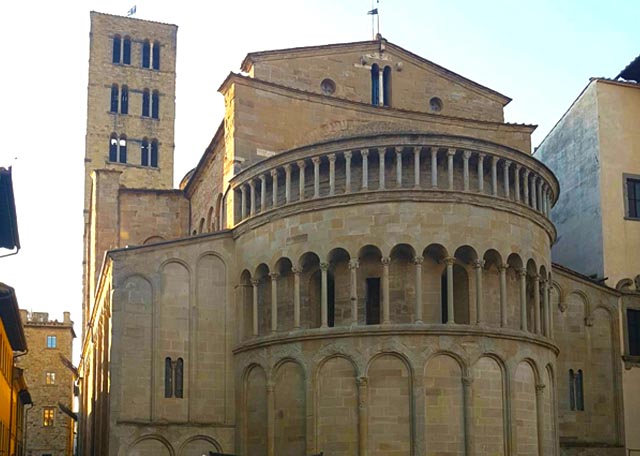
Oggi la mia amica Debora Bresciani, che abita ad Arezzo e che fa il tour guide, scrive un guest post per i lettori del blog. Lei parla di una chiesa molto importante – Pieve di Santa Maria. La chiesa risale al 1008. La termine “pieve” è un termine medievale che si riferisce alle parrocchie ecclesiastiche minori e fa parte del linguaggio comune.
Today my friend Debora Bresciani who lives in Arezzo and who is a tour guide writes a guest post for the readers of the blog. She will talk about a significant church – Pieve di Santa Maria. The church dates back to 1008. The term “Pieve” is a medieval term that refers to minor ecclesiastical parishes and is part of the common language.
La caratteristica più sorprendente della chiesa è la sua facciata, con un piano inferiore a cinque archi sormontato da tre logge, con il numero di colonne che aumenta con l’elevazione. Potete vedere la abside circolare – molto bello e particolare da Piazza Grande.
The most striking feature of the church is its facade, with a lower five-arched floor surmounted by three loggias, with the number of columns increasing with elevation. You can see the very beautiful and unique circular apse from the Piazza Grande.
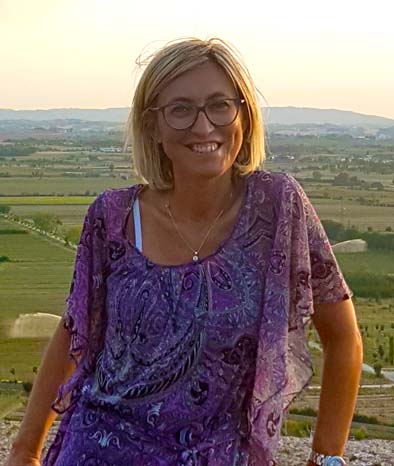
Ecco Debora che ci spiega più di questa bellissima chiesa.
Here is Debora to explain more about this beautiful church.
Di cosa voglio parlarvi riguardo alla mia città?
What do I want to tell you about my city?
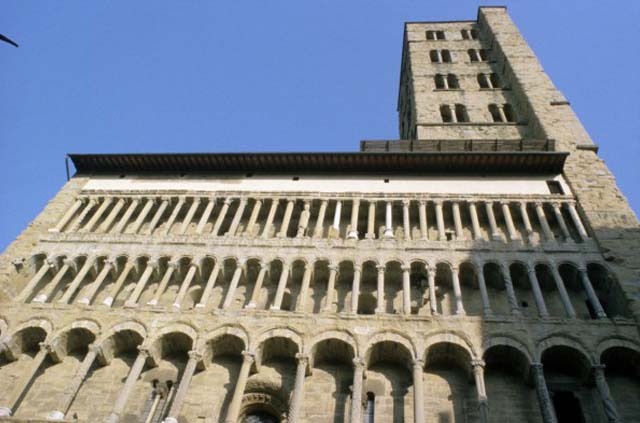
Per iniziare della Pieve di Santa Maria, l’edificio più amato dagli aretini, e in modo particolare dell’archivolto del portale maggiore con il Ciclo dei Mesi.
For starters…I want to talk about Pieve di Santa Maria, the most beloved building in Arezzo, and in particular that of the vault of the principal doorway with the cycle of the months.
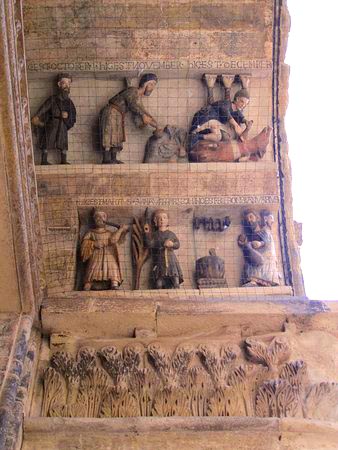
La Pieve di Arezzo si può ammirare già salendo dal Corso Italia con il suo campanile, detto “delle cento buche” per le bifore che si aprono in ogni lato, e quando si arriva di fronte alla sua facciata romanica formata da colonne si rimane ad ammirarla a bocca aperta.
The Pieve di Arezzo can be seen climbing up Arezzo’s main street Corso Italia especially noticeable because of its bell tower, called “one hundred holes” because of the mullioned windows that open on each side, and when you arrive in front of its Romanesque facade formed by columns you can admire it with astonishment.
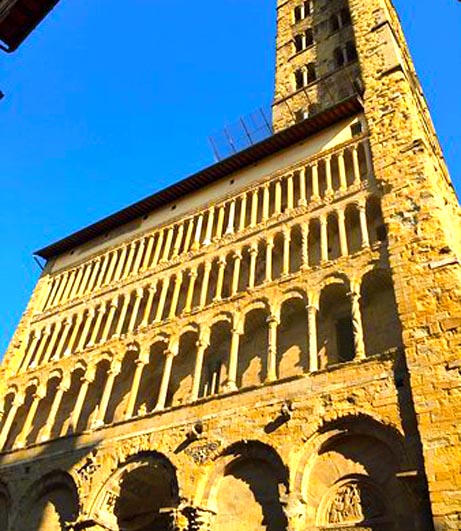
Quello che è sempre visibile nella facciata, ma spesso neanche notato dagli stessi aretini, è l’archivolto del portale maggiore con il Ciclo dei Mesi.
What is always visible on the facade, but often even overlooked by the people who live in Arezzo, is the archivolt – the arch over the central portal with the Cycle of the Months.
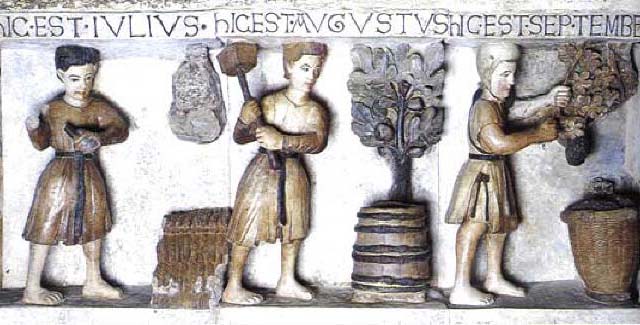
Il tema della rappresentazione dei mesi, collegato alle diverse attività agricole e ai mestieri tipici di ogni stagione, era molto importante nel Medioevo perché ogni volta che il fedele passava la soglia della sua Chiesa si poteva riconoscere nei personaggi rappresentati, con gli utensili e l’ abbigliamento caratteristici di ogni professione, e quindi si sentiva accolto come a casa pur entrando in un ambiente maestoso.
The months are tied to the different agricultural activities typical of each season. This was very important during the Middle Ages because every time the faithful passed over the threshold of the church that could recognize the characters represented, by the tools and the clothing characteristic of each profession. In this way, they could feel welcomed as if they were coming home even while entering the majestic church.
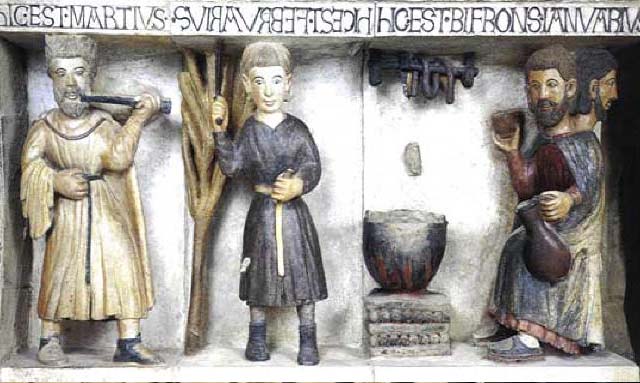
Leggiamo alcuni particolari dei mesi e così capiamo il significato di questa opera. Gennaio, rappresentato da Giano bifronte, con lo sguardo rivolto al passato e al futuro, mentre beve un bicchiere di vino davanti al focolare acceso e in alto gli insaccati a stagionare, da notare i due volti, molto simili ma quello rivolto al passato, barbuto e più anziano, Maggio un cavaliere a cavallo, un chiaro riferimento alla ripresa della campagna militare.
Reading some details of each month, we can better understand this work. January is represented by Giano who is two-faced with an eye to the past and the future. He is shown drinking a glass of wine in front of the fireplace, and above are meats curing. It is interesting to see that the two faces are similar. But, the visage that looks to the past is bearded and old. May is represented by a rider on horseback, an apparent reference to a military campaign.
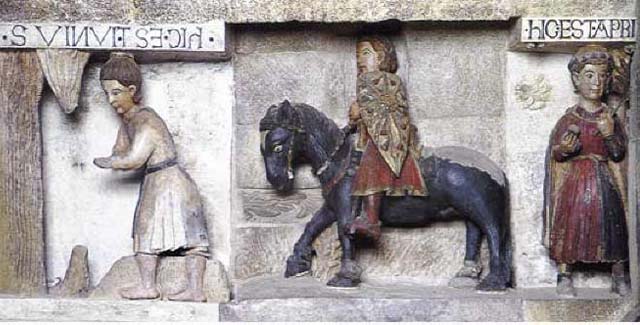
Settembre mese della vendemmia, rappresentato da un giovane che raccoglie l’uva, Novembre la raccolte delle rape, da osservare le colonnette sullo sfondo (un richiamo alla Pieve) e Dicembre con l’uccisione del maiale, che sovrasta Gennaio ad indicare il percorso ciclico della successione annuale. In Dicembre se guardiamo bene il maiale vediamo una colorazione bianca, si tratta della razza che oggi conosciamo come cinta senese, razza allevata già nel Medioevo nel territorio aretino.
The month of September shows the harvest and is represented by a young man who is collecting grapes. November shows the collection of turnips. It is interesting to see in the background of this figure the columns which represent the church itself. And December shows the killing of the pigs, which hangs over January indicating the course and the cycling of the months. In December if you look at the pig you can see it is colored white, it is the breed that we know today as a Cinta Senese, a breed raised in the Middle Ages in the territory around Arezzo.
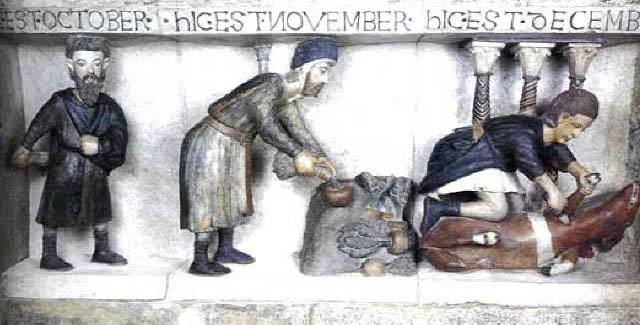
Lo scultore, probabilmente Marchionne, mostra di essere legato al ciclo dei mesi antelamico di Parma e Ferrara, rifermento che permetterebbe di datare il ciclo intorno al 1230-1240.Il restauro del ciclo iniziato nel 1993 è durato circa dieci anni e ha riportato alla luce le policromie originali che lo rende ancora più unico.
The sculptor, probably was Marchionne, as his work can be tied to cycles carved in Parma and Ferrara and dates the piece to about 1230-1240. The restoration of the opera of art started in 1993, taking about ten years, and has revealed the original polychrome colors that make this piece even more unique.
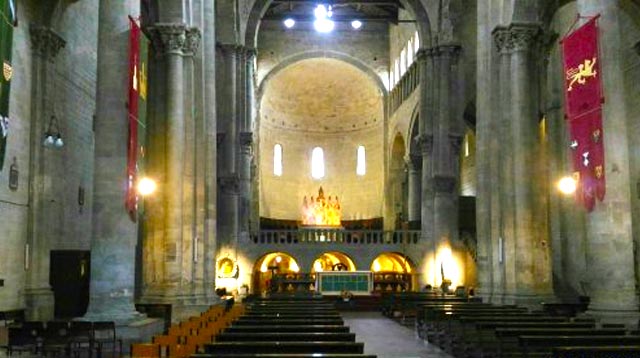
Ovviamente dopo aver ammirato l’archivolto, vi invito ad entrare per apprezzarne le opere.
Naturally, after admiring the archivolt, I invite you all to enter the church to enjoy its interior.
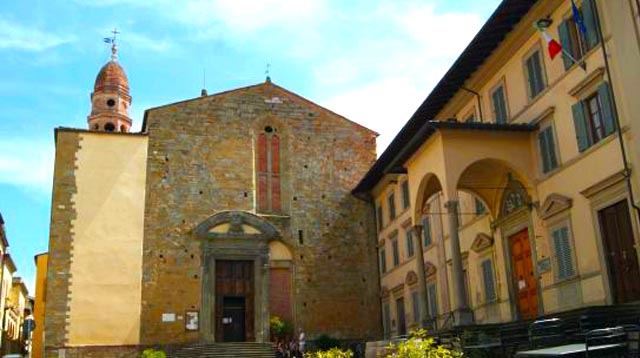
Un altro gioiello poco conosciuto della mia città e che a me piace molto si trova all’interno della Badia delle Sante Flora e Lucilla. La Badia oltre ad essere ricca di storia e opere di grandi artisti come Giorgio Vasari, Bartolomeo della Gatta e Segna di Buonaventura, conserva un capolavoro barocco di Andrea Pozzo, la Finta cupola. Di cosa si tratta? L’artista, grande pittore, scenografo e teorico della prospettiva dipinse nel 1702 una grande tela che venne portata ad Arezzo direttamente da Roma e posizionata all’interno della Badia. Dal giusto punto di osservazione segnalato sul pavimento di fronte all’altare vasariano è possibile ammirare al meglio l’illusione prospettica e ottica che crea, tanto da far sembrare una cupola una tela dipinta, per questo chiamata Finta Cupola.
Another little-known gem of my city and one that I like is the Badia delle Sante Flora and Lucilla. La Badia, is rich in history as well and contains work done by great artists such as Giorgio Vasari, Bartolomeo della Gatta, and Segna di Buonaventura and also houses a masterpiece by Andrea Pozzo. He has created a “fake” dome. What is that? The artist was a master scene painter and master of perspective. In 1702 he painted a large canvas that was brought to Arezzo directly from Rome and positioned inside the Abbey. From the right point of observation (which is marked on the floor in front of Vasari’s altar), it is possible to admire and fully appreciate the optical illusion, which makes the view truly believe he is looking up into a vaulted dome. For this reason, it is called the “Fake dome.”
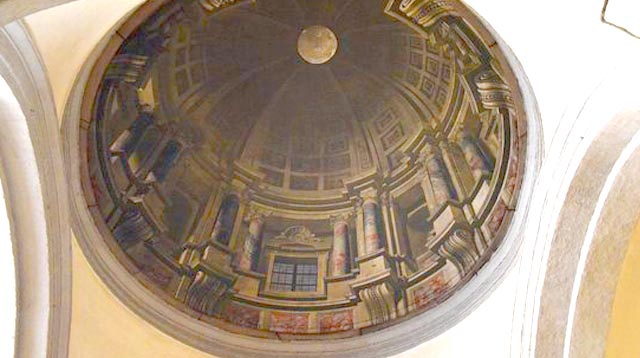
Thanks Debora! Un’ultima cos ache io volevo segnalare sulla Chiesa di Pieve di Santa Maria. Se la guardate dalla Piazza, noterete che una delle colonne sembra piegata o che sta inginocchiando. Questo è perché l’umile architetto mostra la sua deferenza verso Dio. Secondo lui, solo Dio può creare la perfezione e gli umani avevano bisogno di riconoscerlo e mostrare la loro umilità.
Grazie Debora. One last thing I wanted to point out about the church of Pieve di Santa Maria. If you look at it from the Piazza, you will notice one of the columns appears to be bent or kneeling. This is because the humble architect shows his deference to God. It was his belief only God created perfection and humans needed to recognize this and show their humility.
If you are visiting Arezzo and are interested in taking a tour of the City, Deborah would love to show you her city. You can contact her on her Facebook page Travel with Debora
Join me in September to explore Arezzo and dive deeper into the culture. Study with me at Cultura Italiana and take your language skills to a new level. Spots still available for more information click here.
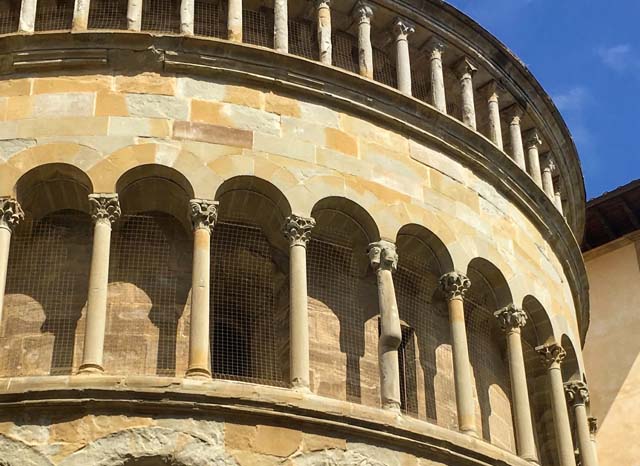
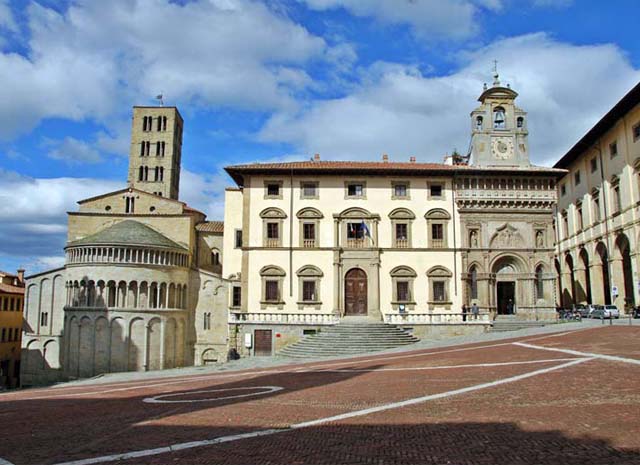
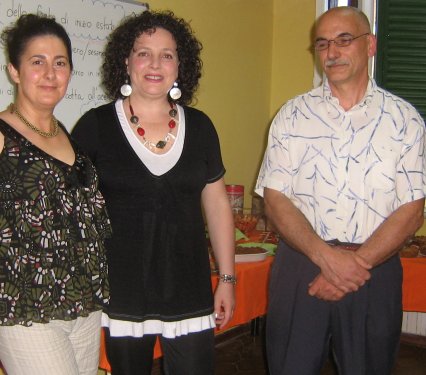
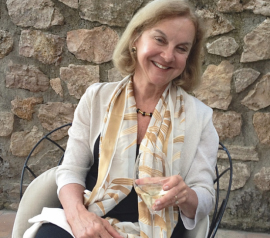
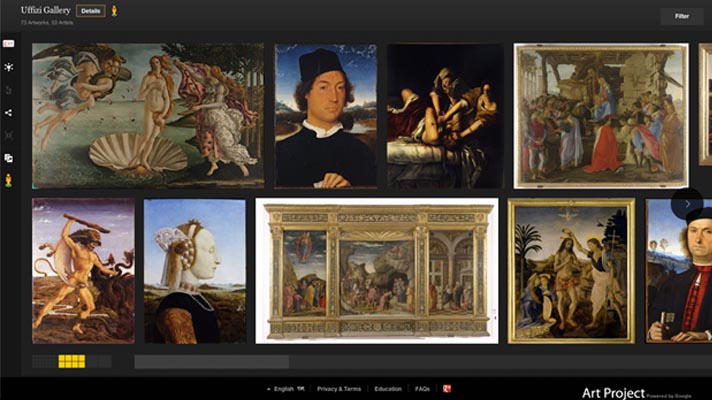
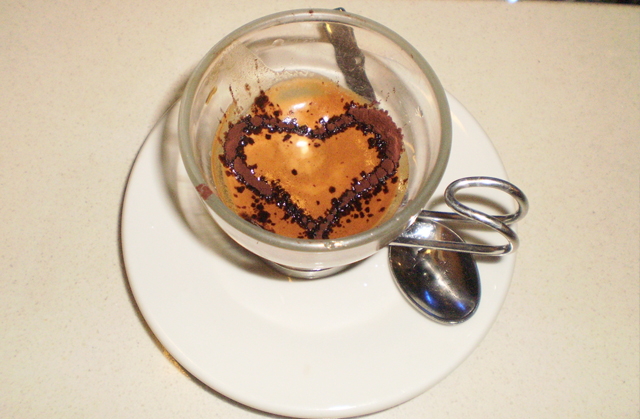
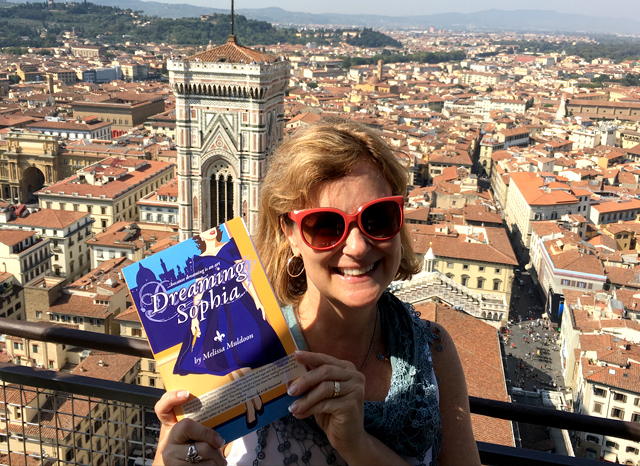
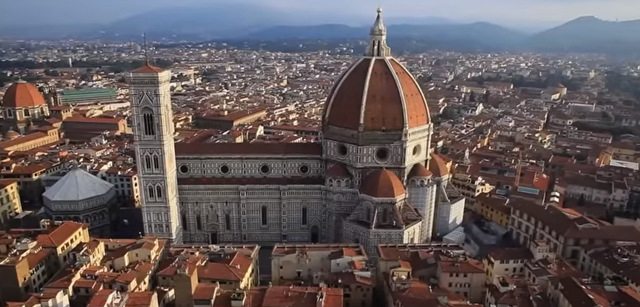






Grazie Melissa e Debora per questo bell’ articolo. Viene proprio voglia di andare ad Arezzo e soffermarsi ad ammirare questi particolari oltre che alla bellezza dei monumenti e dei luighi.
Ciao Roberta! Dovresti venire ad Arezzo con noi (Puoi rispolverare il tuo italiano LOL!! 😉 )